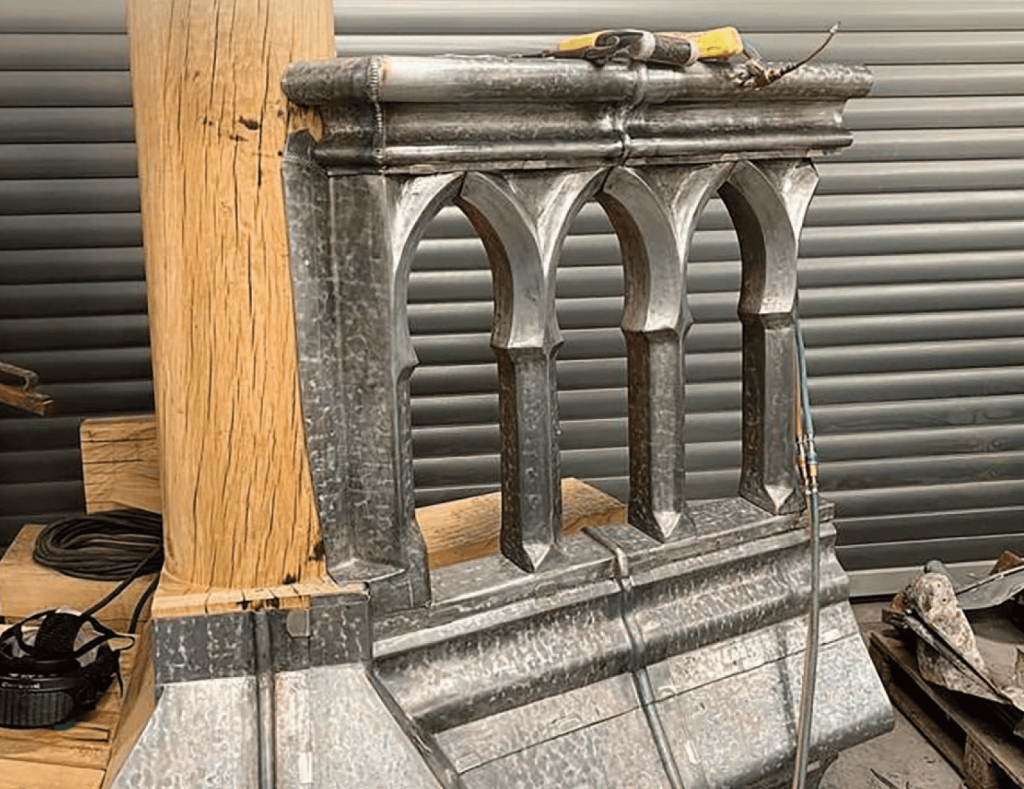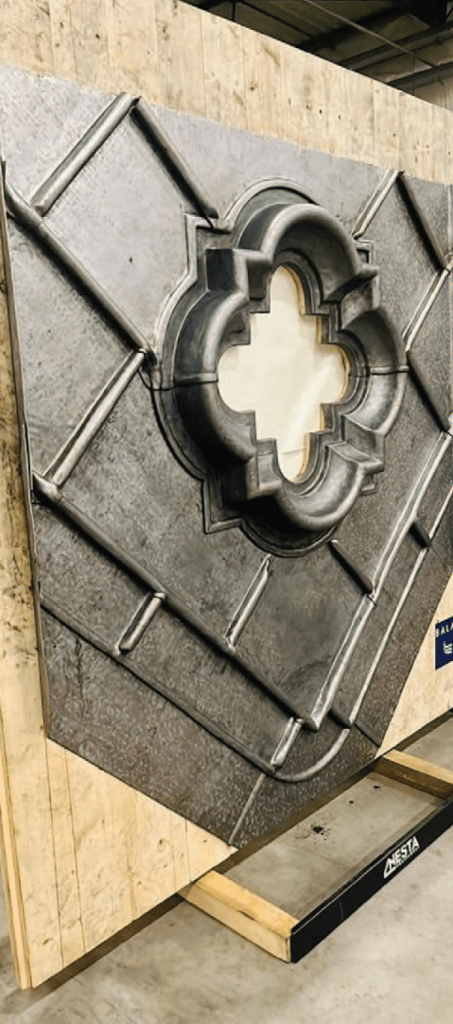LCA Associate Member, Sand Cast Lead Conservation Ltd, supply sand cast lead sheet for the restoration of Notre – Dame de Paris.
Sand Cast Lead Conservation Ltd was founded in 2018 by Bradley Smith. Bradley started in the industry working as an apprentice lead worker after leaving school at the age of 16. Then working within the lead manufacturing industry until present day leading and building his own company with the vision of manufacturing and installation being all done within one company.
In addition to manufacturing, Sand cast Lead Conservation prides itself on the great team working on installations across the country. These projects allow us to recycle by the process of recasting the old lead and installing as new sheets all within house. Preservation, restoration, and conservation are all elements the business is built upon, and we try to maintain the heritage and history wherever possible.
Our project and partnership with the contractors at Notre Dame Paris is going from strength to strength as we continue to produce the large amount of sand cast lead sheets required to complete this prestigious and exciting restoration.
This has involved many hurdles, meetings, site visits both to site in France and visits from the contractors to our manufacturing site to ensure we meet all of our client’s needs, one of which is all lead sheets produced must be manufactured from 99.9% pure lead. To comply with this we have had advice and help from third parties and are grateful for the assistance provided by Ecobat.
Below, Notre Dame Decorative Leadwork to Base of Spire

Once we have received the 99.9% pure lead in ingot form this is loaded into our smelting pot and the process would then be: The lead is then put into the melting pots, which are gas fired, and melted down. The melting point of lead is 621 degs. F or 327 degs. C, and when the lead has melted any impurities which are ingrained in the surface of the lead float to the surface and can be skimmed off as dross. This dross is reclaimed and again sold separately.
When the pot full of molten lead has been skimmed, it is then transferred into the pig moulds by hand ladling, the pigs weighing approximately 88lbs each, and from here the pigs are transferred through into the Casting Shop, which is the next step in the process of making cast lead.
Basically, this process consists of throwing molten lead down a bed of prepared damp sand. This method has changed little since Roman times and the equipment needs is very basic. The process consists of a predetermined amount of sand, which is watered and thoroughly mixed using wooden paddles, it is then roughly spread across the table, and then using a bar of wood called a strickle being propelled by two men at each end and supported by the side beams of the table, the sand is then roughly leveled off. The strickle is then used to ram the sand and solidify it, it is then again leveled off with the strickle. This has brought the surface of the sand down to its required level and is ready for smoothing to the required finish, by the use of hand-held copper planes.
While this has been going on, the lead in the melting pots at the head of the table has been brought up to the required temperature and is then ladled out into the head pan. When sufficient lead has been transferred, the head pan is lifted by means of the pulley wheel and handle and the molten lead is sent down the surface of the table. Whilst this is still molten and again using the same strickle, the lead is planed off to give its required thickness. This is determined by a number of factors, namely the speed at which the lead is thrown down the table, the heat of the metal and the speed with which it is planed off, and also has a lot to do with the experience of the men involved in the casting. The excess lead is collected in the tail pan and is then transferred back into the pot at the head of the table for re-cycling.
As soon as the men with the strickle reach the bottom of the table, the lead behind them has already set and can be marked and cut virtually immediately. All the lead used on our roofing contracts is measured for each specific job and is cut to size, rolled and weighed individually. Any lead then left on the table is cut up and again re-cycled.
In addition to the lead used on roofs, we also manufacture lead rainwater goods, head and downpipes, and if these are required with mouldings and patterns, they can be pressed into the sand on the table before the sheet is thrown. These are then cut out and formed by hand into the pipes and head.

Above, Notre Dame Decorative Leadwork to Base of Spire
Sand Cast Lead Conservation Ltd are proud to be a part of this project as a British company working on a historic building in Europe and we hope this will lead to many more in the future both in the U.K and Europe.
www.sandcastlead-conservation.co.uk
